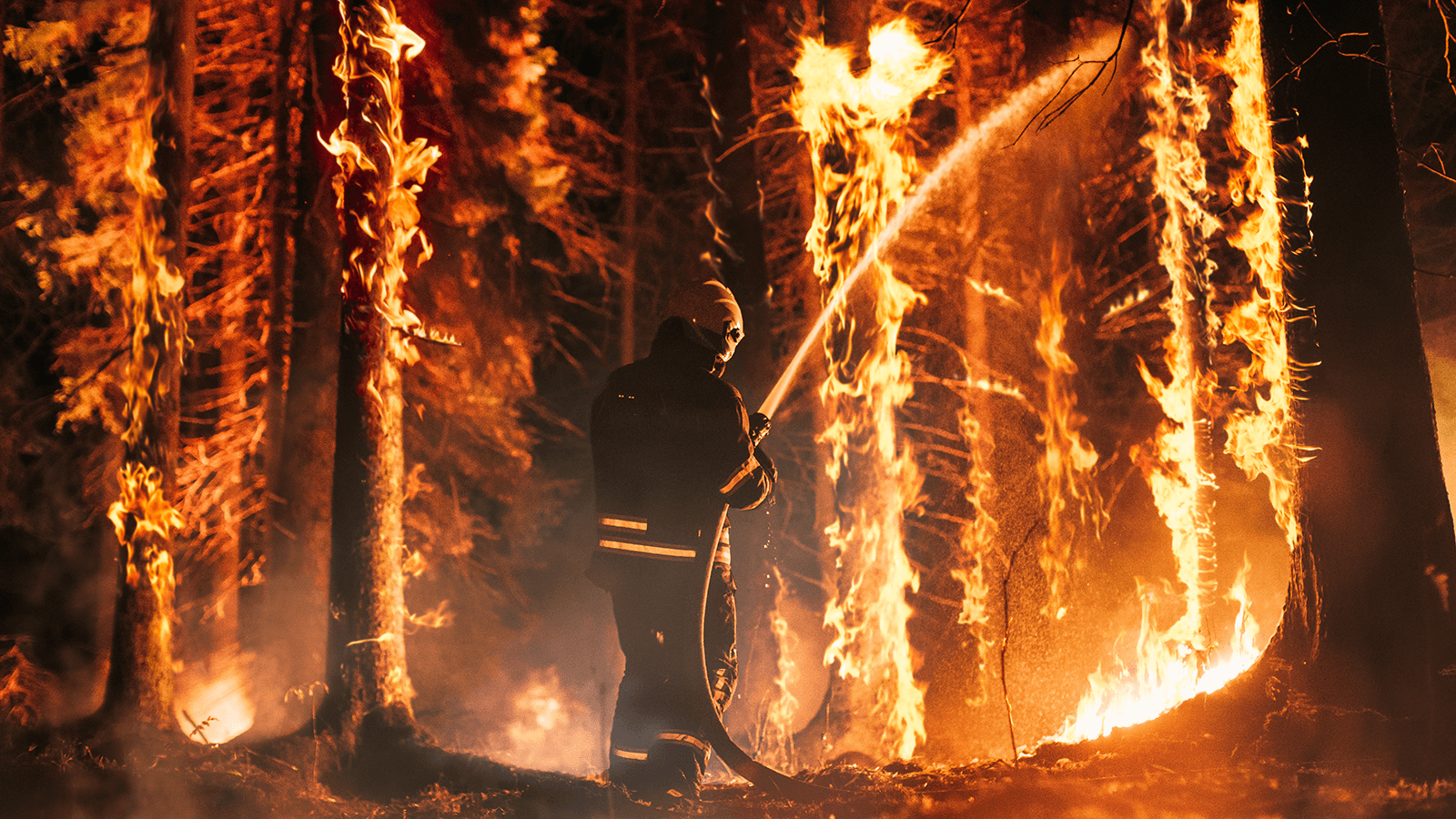AI vs. Wildfire
Researchers at USC have developed a new method to accurately predict wildfire spread. By combining satellite imagery and artificial intelligence, their model offers a potential breakthrough in wildfire management and emergency response.
Detailed in an early study proof published in Artificial Intelligence for the Earth Systems, the USC model uses satellite data to track a wildfire’s progression in real time, then feeds this information into a sophisticated computer algorithm that can accurately forecast the fire’s likely path, intensity and growth rate.
The study comes as California and much of the western United States continue to grapple with an increasingly severe wildfire season. Multiple blazes such as the Park Fire — fueled by a dangerous combination of wind, drought and extreme heat — have raged across the state. As of August 2024, nine of the 10 largest wildfires in California history have happened in the last seven years.
“This model represents an important step forward in our ability to combat wildfires,” said Bryan Shaddy, a doctoral student in the Department of Aerospace and Mechanical Engineering at the USC Viterbi School of Engineering and the study’s corresponding author. “By offering more precise and timely data, our tool strengthens the efforts of firefighters and evacuation teams battling wildfires on the front lines.”
Reverse-engineering wildfire behavior with AI
The researchers began by gathering historical wildfire data from high-resolution satellite images. By carefully studying the behavior of past wildfires, the researchers were able to track how each fire started, spread and was eventually contained. Their comprehensive analysis revealed patterns influenced by different factors like weather, fuel (for example, trees, brush, etc.) and terrain.
They then trained a generative AI-powered computer model known as a conditional Wasserstein Generative Adversarial Network, or cWGAN, to simulate how these factors influence the way that wildfires evolve over time. They taught the model to recognize patterns in the satellite images that match up with how wildfires spread in their model.
They then tested the cWGAN model on real wildfires that occurred in California between 2020 and 2022 to see how well it predicted where the fire would spread.
“By studying how past fires behaved, we can create a model that anticipates how future fires might spread,” said Assad Oberai, Hughes Professor of Aerospace and Mechanical Engineering at USC Viterbi and co-author of the study.
Using AI to predict wildfires: Impressive model
Oberai and Shaddy were impressed that the cWGAN, initially trained on simple simulated data under ideal conditions like flat terrain and unidirectional wind, performed well in its tests on real California wildfires. They attribute this success to the fact that the cWGAN was used in conjunction with actual wildfire data from satellite imagery, rather than on its own.
Oberai, whose research focuses on developing computer models to understand the underlying physics of various phenomena, has modeled everything from turbulent airflow over aircraft wings to infectious disease and how cells multiply within tumors and interact with their surroundings. Of everything he has modeled, Oberai notes that wildfires are among the most challenging.
“Wildfires involve intricate processes: Fuel like grass, shrubs or trees ignites, leading to complex chemical reactions that generate heat and wind currents. Factors such as topography and weather also influence fire behavior — fires don’t spread much in moist conditions but can move rapidly in dry conditions,” he said. “These are highly complex, chaotic and nonlinear processes. To model them accurately, you need to account for all these different factors. You need advanced computing.”




